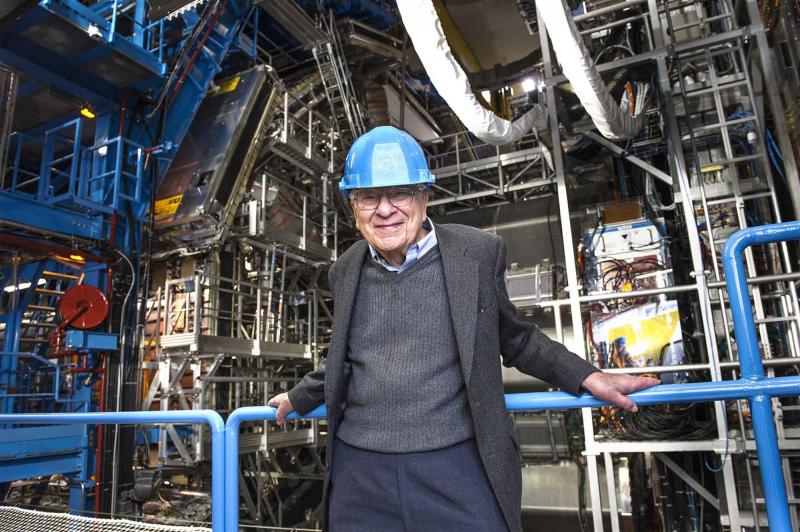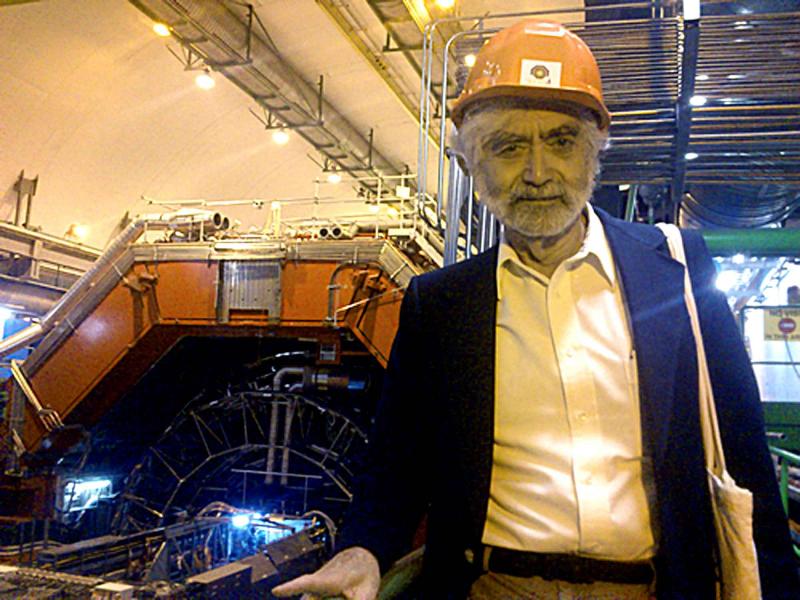In 1964, two physicists independently proposed the existence of the subatomic particles known as quarks.
Physicists Murray Gell-Mann and George Zweig were working independently on a theory for strong interaction symmetry in particle physics. Within this framework, they proposed that important properties of the strongly interacting particles – hadrons – could be explained if they were made up of constituent particles.

In 1961 Gell-Mann had introduced a symmetry scheme he called the Eightfold Way, which was based on the mathematical symmetry known as SU(3). The scheme (for which he received the Nobel prize in physics in 1969) classified the hadrons into two main groups, rather as the Periodic Table classifies the chemical elements.
Gell-Mann built upon this work in a new model that could successfully describe – among other things – the magnetic properties of protons and neutrons. But Gell-Mann's model required the existence of three new elementary particles, which he called "quarks."
Gell-Mann says that he first came up with the sound "quork", and later chanced upon the phrase "Three quarks for Muster Mark" in James Joyce's Finnegans Wake. As Joyce presumably intended the word to rhyme with "Mark", people have been divided on the pronunciation ever since.
Physicist George Zweig made his contribution to the field while he was a visitor to CERN in a paper dated 17 January 1964, in which he proposed: "Both mesons and baryons are constructed from a set of three fundamental particles called aces." Though Zweig's name for the particles did not stick, he showed that some properties of hadrons could be explained by treating them as triplets of other constituent particles.

Both Gell-Mann’s quarks and Zweig’s aces had to have electrical charges equal to 1/3 or 2/3 that of an electron or proton, suggesting that an experimental search for these constituents would reveal whether or not they existed.
In 1968, a series of electron-proton scattering experiments by the MIT-SLAC collaboration at the Stanford Linear Accelerator Center (SLAC) in the US revealed the first signs that nucleons have an inner structure. The team fired electrons at protons and observed how the electrons bounced off. The scattering patterns were identified as being caused by point-like particles inside the protons. In the subsequent years, by combining these results with others from neutrino-scattering in the Gargamelle bubble chamber at CERN, it became clear that these constituents really do have charges of 1/3 and 2/3.
Quarks are now a key part of the Standard Model. In numerous experiments at CERN including those at the Large Hadron Collider (LHC), physicists are measuring the properties of Gell-Mann and Zweig's particles with ever-greater precision.
More on quarks
- Watch George Zweig's technical account the history of quarks (Recorded at CERN in September 2013)
